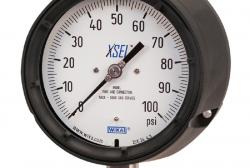(click for details) UPDATE: HDCL's Response to COVID-19

HDCL is an Essential Business and will remain OPEN. Given the nature of Huston-DePue Calibration Laboratories’ (HDCL) services, many of our customers are identified as one of the 16 critical infrastructure sectors as outlined by the United States Department of Homeland Security in https://www.cisa.gov/critical-infrastructure-sectors. Therefore, HDCL has a duty to continue to provide calibration services to these “essential businesses” to the extent permitted by our available resources and federal, state and local orders.
HDCL continues to monitor the outbreak of COVID-19 closely and has taken appropriate measures to ensure the health and safety of our employees and their families, as this is our top priority. We will continue to implement best practices as published by the CDC and other sources.
HDCL's Response to COVID-19

As you know, the World Health Organization has declared a pandemic related to the coronavirus, and there are confirmed cases in Oklahoma. HDCL wants to keep you apprised of the steps we are taking to keep our staff and customers safe and to keep our operations running smoothly.
At the present time we are allowing for normal business activities while taking proactive measures to mitigate spread of the virus. We will continue to monitor, and address escalating conditions should those occur.
There will be a great deal of pent up demand for all services and products when our country healthily emerges from this pandemic. HDCL wants to continue to partner with you to meet these great needs for our fellow citizens and to strengthen the economy. Our operations currently allow for continued operation without contributing to the spread of the virus. Until an update is issued, please do not hesitate to ship your equipment to us for calibration or deliver it to our laboratory.
While we obviously have no control over shipping companies and parts vendors, we will continue to do everything we can to keep all our customers prepared to hit the ground running when the threat has lifted.
As this issue continues to evolve, HDCL management will adjust our approach to the challenge as warranted. We will keep you informed if those decisions further impact the way HDCL interacts with you, our valued partner. Stay safe.
HDCL at The Ranch

To all our loyal customers, please accept a heartfelt thank you from the entire team here at HDCL! We appreciate you trusting us with your test equipment. We look forward to serving you through 2020 and beyond.
Thanks are in order as well to the Ranch Steakhouse for hosting our holiday party for the third year running. The food and service is outstanding.
HOLIDAY HOURS!
Our laboratory will be CLOSED:
Tuesday - Dec. 24, 2019 - Christmas Eve
Wednesday - Dec. 25, 2019 - Christmas Day
Wednesday - Jan. 01, 2020 - New Year's Day
If you have an emergency please call 917.434.8468 and we will help you as soon as possible!
Understanding Pressure Measurement

Pressure measurement is all about PSI. That’s because pounds per square inch (PSI) is the most common unit for measuring pressure in the U.S. It’s important to understand what PSI means and how it is used.
PSI (pounds per square inch) is the unit of pressure used the vast majority of the time in the United States for household, commercial, or industrial equipment. Other countries measure pressure in different units. In scientific contexts (physics labs and so forth), pressure is typically measured in much smaller units called pascals (named after French physicist Blaise Pascal). For reference, 1 PSI equals 6,894.76 pascals. Pressure measurement instruments such as pressure gauges and sensors typically display measurements in PSI. Two frequently used variations of PSI are PSIA and PSIG.
Pounds per Square Inch Gauge – PSIG Vs. Pounds per Square Inch Absolute – PSIA
PSIG is the term for pressure specified by a gauge or other pressure measurement device. It gives the difference between the pressure in a pipe or tank and the pressure of the atmosphere (atm).
PSIA is a term that describes the absolute pressure in PSI, including the pressure of the atmosphere. Absolute pressure is also sometimes referred to as “total pressure.”
Examples of How to Calculate PSIG and PSIA
Note that PSIG is always lower than PSIA. The formulas to describe the relationship are: PSIG + 1 atm = PSIA and PSIA – 1 atm = PSIG (where atm is atmospheric pressure). It is easy to calculate PSIA or PSIG or convert between the two. You can use the actual atmospheric pressure value for your location if it is available, or you can also use 14.7 psi (the approximate atmospheric pressure at sea level) as a standard value to convert PSIG to PSIA and vice versa. (Unless you live at high altitude or in a deep valley, the sea level value will work.) In other words, since atmospheric pressure at sea level is 14.7 PSIA, you subtract the PSIA of 14.7 from an atm pressure of 14.7 to equal zero PSIG (14.7 (PSIA) – 14.7 (atm) = 0). As an example, absolute pressure at sea level is 14.70 PSIA and absolute pressure at an elevation of 1,000 feet is 14.18 PSIA. At the higher elevation there is less pressure, so if an absolute pressure gauge is read at a 1000-foot elevation, its readings will be close to .5 PSI (14.70 – 14.18 = .52) less than those from a standard pressure gauge.